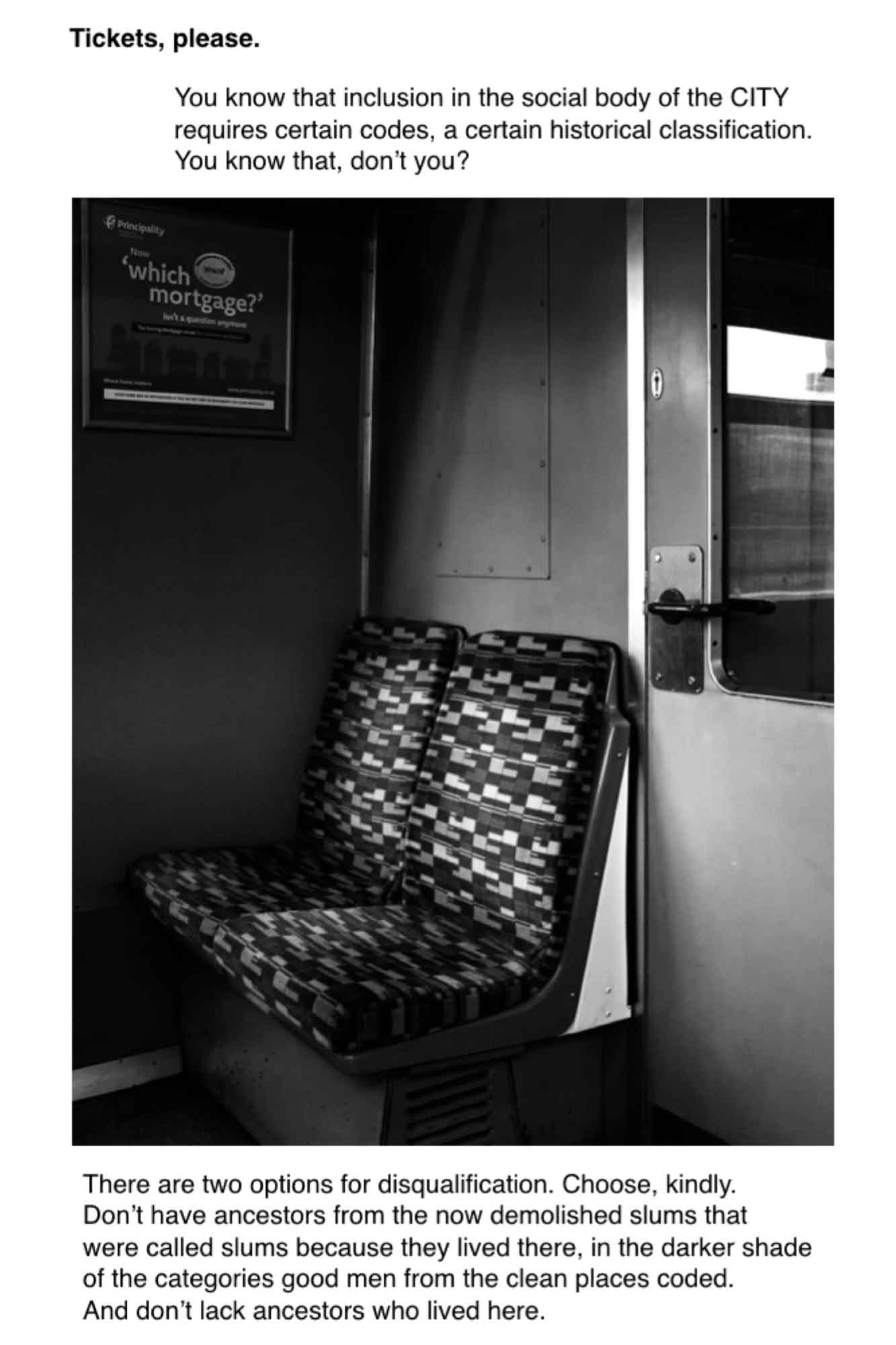
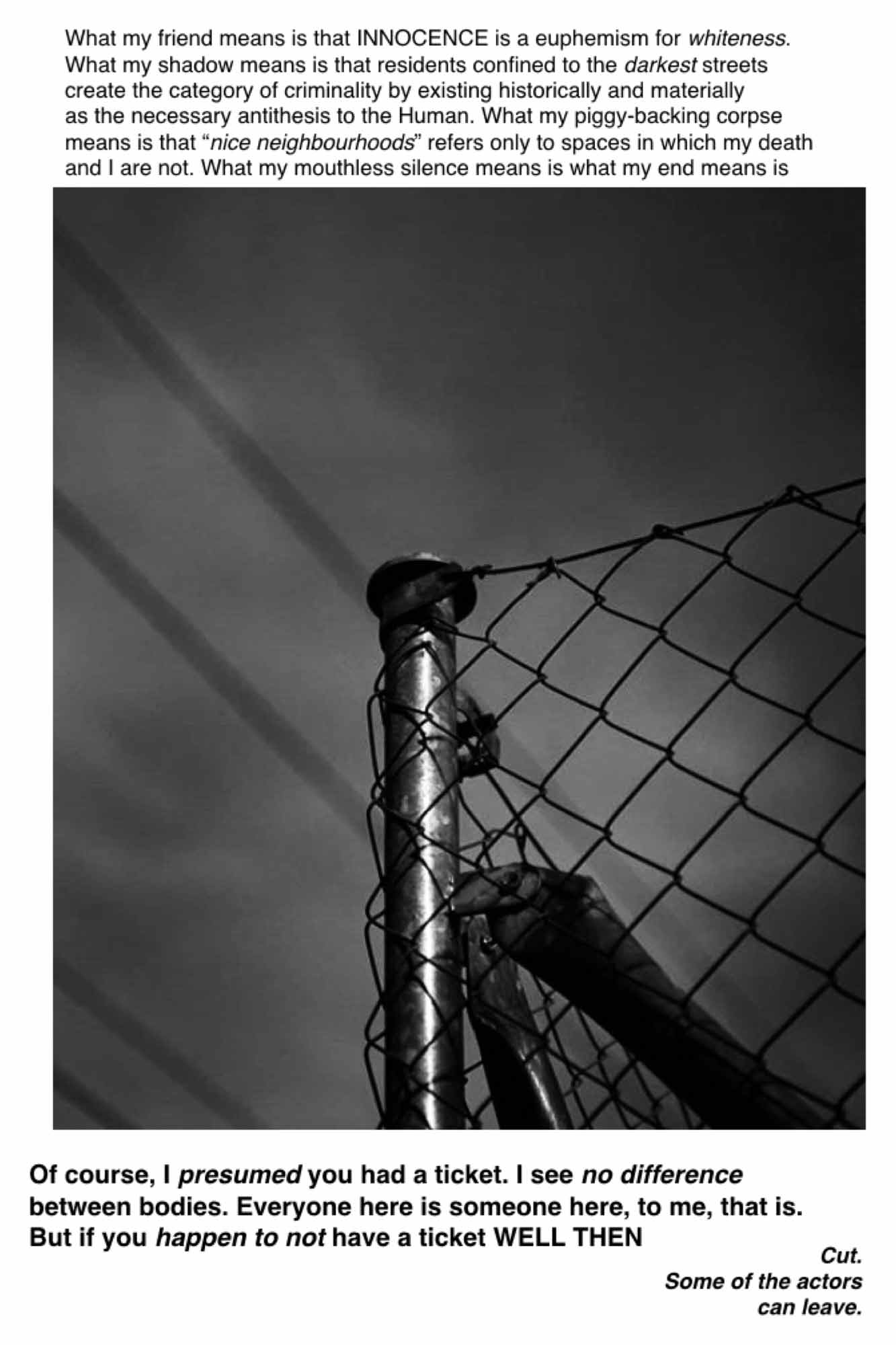
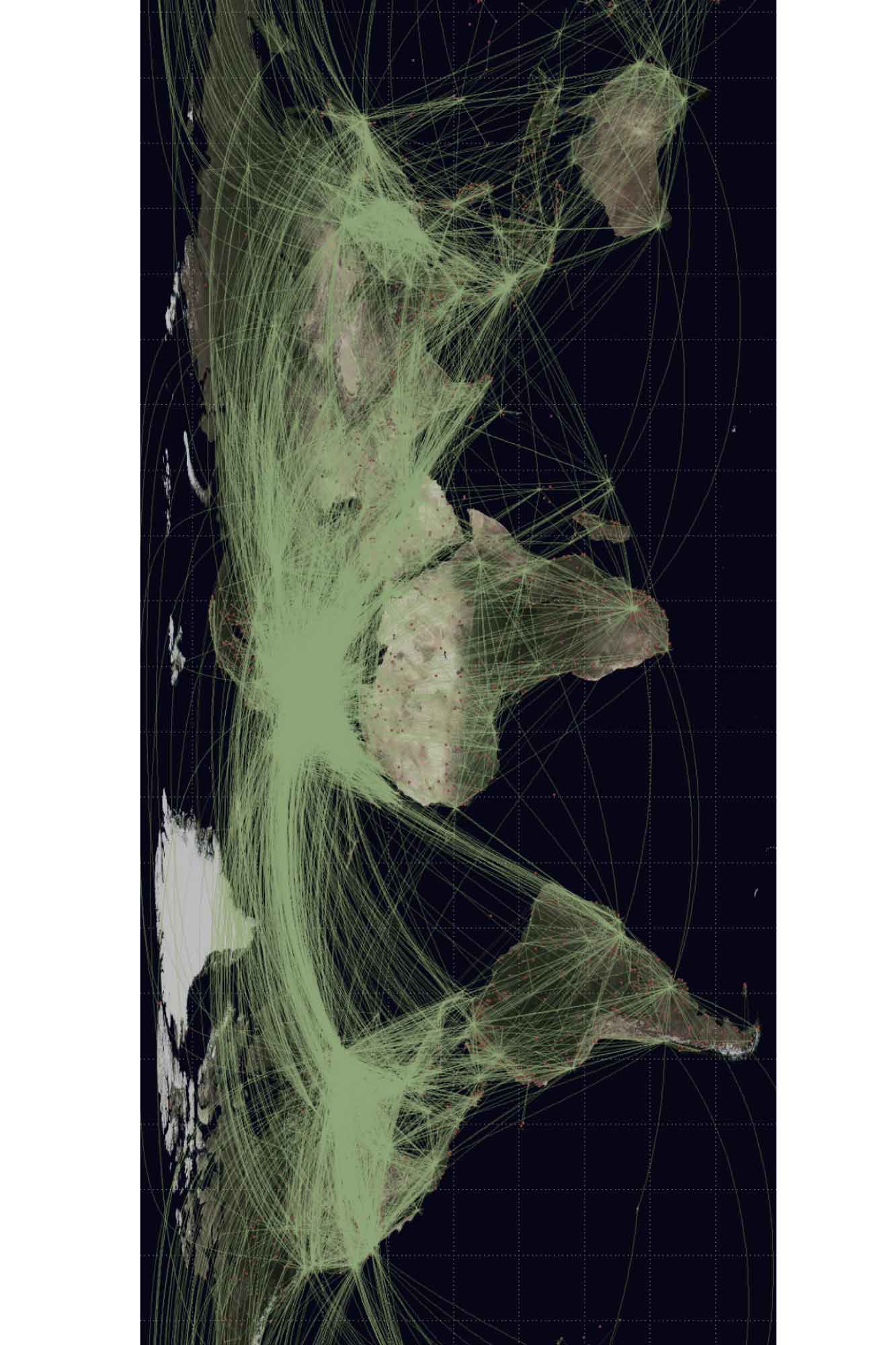
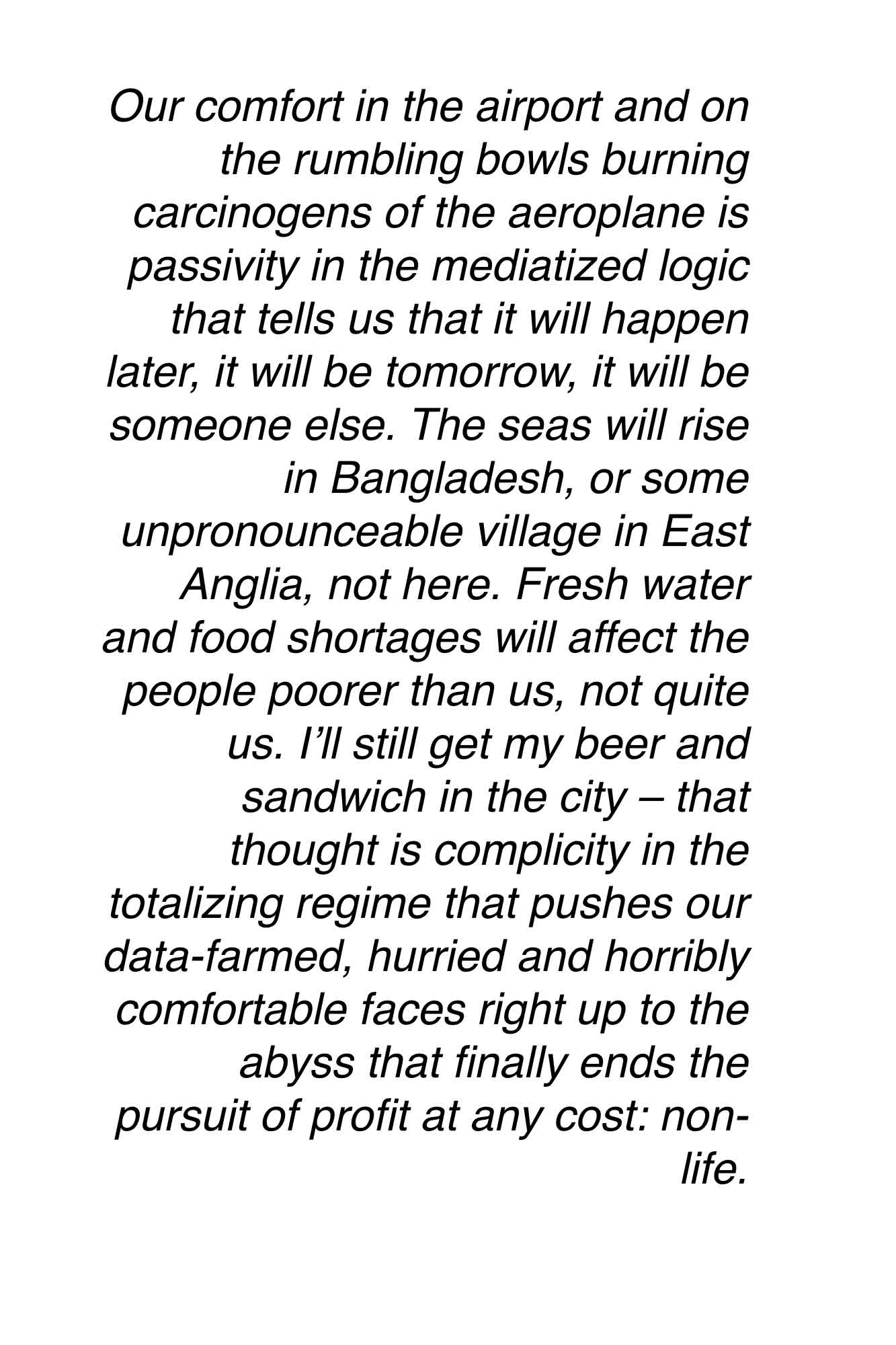
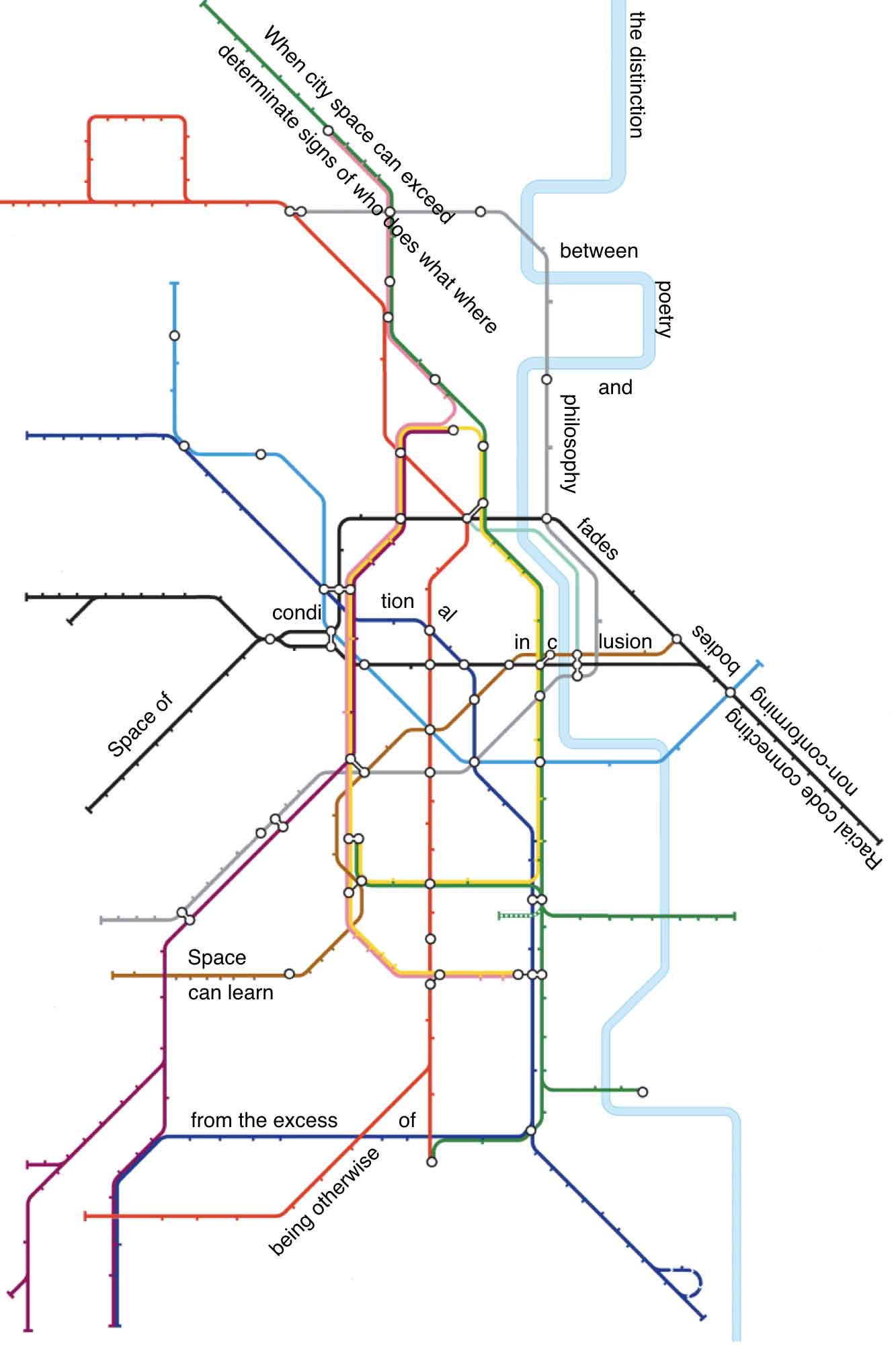
The new body transcends everything. It lives as accumulated labour-time from the billions of people tapping data value into blameless screens at every moment. This recategorizes the City as an archaic limitation, a nostalgic souvenir from the Anthropocene’s destructive History. And in its footprint are the city embers.
City Embers is a collection of poetry/essays about the end of architecture. Architecture has always been a social practice, the excess of the need to be sheltered. This has been grounded by the force of socially imbalanced power. Social housing categorizes resident bodies as not conforming to capitalism’s work regime. Non-Western architectural structures categorize their resident bodies as primitive in capitalism’s racial code. Castles accumulate power in their monumental stone, as do the exclusionary glass panels of City towers. In contemporary data capitalism, however, power wants to be invisible. The castle and the tower are far too seen. Silicon Valley tech execs have plans to transcend the body, transferring their minds into immortal connective energies and moving to Mars. The prize of capital now is to gain omniscience without a body. Having a body in the city, then, is as archaic as a dusty veteran telling war stories. Having a body, inhabiting a structure as architecture, that clearly visible physical regime, is so passé.
In this collection, I use poetry, essays, maps and images to experience architecture from the outside, from the cooling embers of solidity an invisible and omnipresent regime has left behind. But I also criticize my own position as observer of the city. How neutral is the act of seeing? What do I intend by poeticizing the spaces relegated to burnt embers by the newest brutality of capitalism? Some pieces are about the homeless people I work with in Tottenham; some are thinking exercises in London’s public tips; some are questions around the racial codes of ethnographic maps; some are adverts calling back fugitive emancipations. All the pieces in City Embers are attempts at balancing the brutal inequality of capital’s next step.
Elliot C. Mason is a poet, playwright and essayist, working as a researcher and writer for state schools in south London. His essays focus on race, space and capitalism, and have been widely published, including in 3:AM, SPAM, and Review31. His poems are also available online and in print, with one upcoming in MAGMA issue 76. City Embers is his first poetry/essay collection. It is a practice of site-writing at a London homeless shelter, reading/writing the violence of neoliberal architecture from a place that is necessarily excluded from its interior, and produced by its exclusion. The full collection will be published by Death of Workers Whilst Building Skyscrapers in March 2020. Elliot will begin a PhD at the University of Brighton in 2020, in the departments of Philosophy and Architecture, using site-writing to research the space of Black Radicalism in Brixton. Elliot is the founder of Penny Drops Collective, an open space for critical productions. With the ever-changing collective, he has put on many exhibitions, performances, talks and plays. More information is available at www.pennydropscollective.org
While Rendell’s own practice focuses on developing the critic into a particular kind of art user, I take Mariza Daouti’s site-writing suggestion of the critic as social user – a user of historical codes and the imbalanced violence of city space. Adding fugitive thinking from Black Radical theory, a White or property-owning user of social space becomes very different from a Black or homeless user. I try to find the construction of violent social codes (gender, race, ability, etc.) in the architecture of city space and the architecture of subjectivity.
Bratton, Benjamin H., Dispute Plan to Prevent Future Luxury Constitution (Berlin: Sternberg Press, 2015).
Grosz, Elizabeth, Architecture from the Outside: Essays on Virtual and Real Space (Cambridge, Mass.: The MIT Press, 2001).
Harney, Stefano, and Moten, Fred, The Undercommons: Fugitive Planning and Black Study (Wivenhoe: Minor Compositions, 2013).






































































